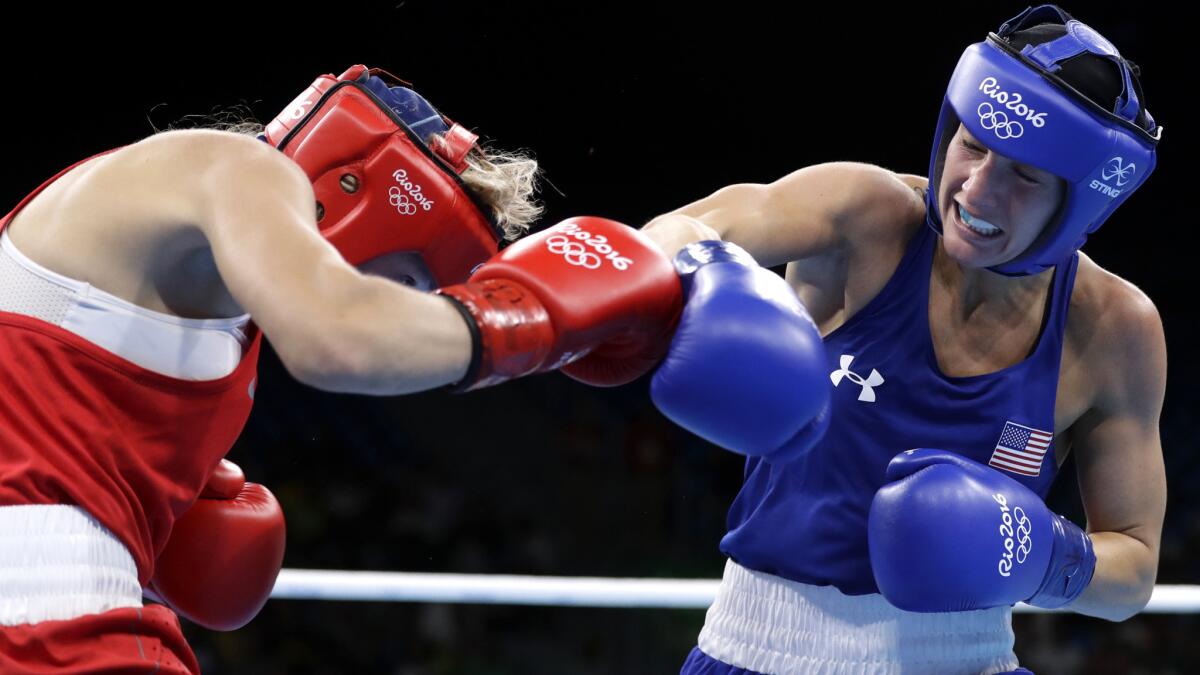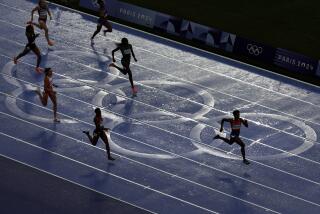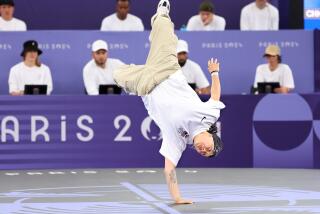Women winning fight for equality in the Olympic boxing ring

- Share via
Reporting from Rio de Janeiro — Mikaela Mayer has toured with a rock band and worked as a model so there aren’t many career options off the table for her. Still Mark Mayer was stumped when asked what his daughter might be doing if she hadn’t become an Olympic boxer.
“It’s changed her life completely. It’s all she lives for,” he said Monday. “She’s eats and breathes boxing.”
Eight years ago she would not be in the ring because boxing was limited to men. The International Boxing Assn. and its president, Ching-Ku Wu, changed that in 2009, when they announced women’s boxing would join the Olympic calendar for the London Games.
Halfway through its second Olympics in Rio, women’s boxing has not only proved it belongs, it has shown it deserves to grow with the AIBA discussing the possibility of doubling the weight classes to six by the 2020 Olympics in Tokyo.
“The standard has gone through the roof,” said Billy Walsh, the U.S. coach who guided Ireland’s Katie Taylor to a lightweight gold medal four years ago and will help U.S. middleweight Claressa Shields begin her quest for a second Olympic title Wednesday.
Mayer’s quest for gold ended Monday with a majority-decision loss to Russia’s Anastasia Belakova in the lightweight quarterfinals.
“It’s frustrating to lose when the fight is so close,” said Mayer, a 26-year-old from West Hills. “Because you know that maybe one or two more combinations could have won it.”
Not frustrating enough to make her quit. While Mayer, a former world championship bronze medalist, could find other ways to make a living, she doesn’t want to.
She plans to stick around for at least one more Olympic cycle.
“It’s given me a career in this sport,” she said of the AIBA. “The girls that have turned professional and are fighting in the pro ranks don’t really have as lucrative of a career as some of us amateur girls, who are fighting consistently.
“We’re getting sponsors, endorsements ... monthly stipends. We’re able to make this our living right now.”
Wu made a number of dramatic changes since taking over as AIBA president 10 years ago. Boxers are fighting without headgear, scoring is done on a 10-point “must” system and, for the first time, three professional fighters are competing in the Olympic tournament.
But the most important reform, says Nicolas Jomard, media chief for the AIBA, has been the addition of women.
Thirty-six women representing 24 countries competed in London; the same number are taking part in Rio. What has changed in the last four years is the level of the competition. While the first-round bouts in the London tournament were often mismatches, the 12-woman fields in Rio had been competitive in all three divisions.
Noticeable by their absence, however, are fighters from Cuba, an international boxing powerhouse but a country where women’s boxing is officially banned. Other countries have similar policies, though Jomard says the resistance is weakening.
“Maybe it’s more of a general comment on society rather than the actual boxing world,” he said. “Why would a woman not be able to perform as well in the ring as a man?”
Jomard says women are now more common as coaches, referees and judges — many for the same reason Mayer plans to stick around.
“I don’t sit at a 9-to-5 [job] every day,” she said. “I get to do what I love. So it’s been great.”
Twitter: @kbaxter11
More to Read
Go beyond the scoreboard
Get the latest on L.A.'s teams in the daily Sports Report newsletter.
You may occasionally receive promotional content from the Los Angeles Times.







